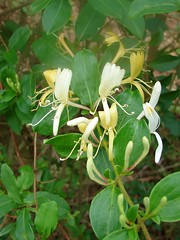
- Image by Martin LaBar via Flickr
Honeysuckle is a sweet treat that many of us remember from our childhoods. Taking the blooms off the plant and sucking the honey-sweet nectar was fun and exciting. The scent of honeysuckle is heavenly and used to our delight in perfumes, soaps and air fresheners.
Nature is peculiar in all its variety. Did you know that there are some honeysuckle plants that don’t even smell? The blossoms look practically the same as the deliciously scented Japanese Honeysuckle, Lonicera japonica. The Japanese honeysuckle is a vine with pairs of white flowers that fade to yellow.
A group of honeysuckles, called Fly Honeysuckles, are shrubs that are related to the Japanese Honeysuckle. The flowers are tubular with five lobes and they project from the leaf axils. The evenness and length of the flower lobes helps to separate the species of honeysuckle. Also, the habitat where the plant lives will help to distinguish it from its relatives.
The Newcomb Field Guide indicates that fly honeysuckles can be found in swamps and bogs, on alpine slopes, in cool woodlands, in thickets and along roadsides.
Morrow’s Honeysuckle, Lonicera morrowi, is the fly honeysuckle in the photos shared here. A few examples were seen flowering at the spillway of Lake Holman along Little Buffalo Road a couple weeks ago.
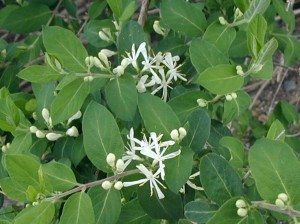
Fly honeysuckle starting to bloom. Photo taken 18 April 2010. White blossoms are freshly open. Note the pairs of flower buds at each leaf node.
Another example of Morrow’s Honeysuckle (on Little Buffalo Road near the intersection with Route 34) was flowering profusely on 30 April 2010. The symmetry of this plant is remarkable with its pairs of opposite leaves and two flowers per leaf axil. The oval leaves themselves are quite symmetrical. Finding this fly honeysuckle along roadsides shows its invasive character.
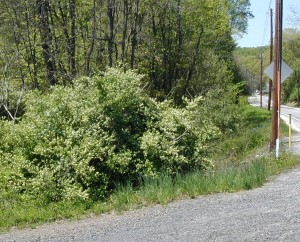
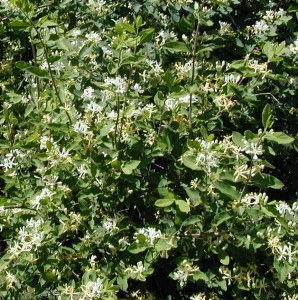
Honeysuckle flowers practically coat this woody shrub.
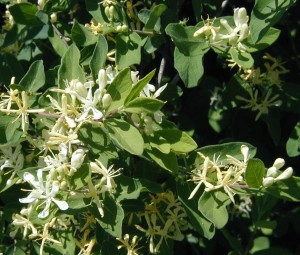
Close-up view of the flowers of dry honeysuckle shows the older blossoms have turned yellow and new ones in the bud stage are creamy white.
Seeing this honeysuckle and getting close enough to realize that it was the scentless kind makes me want for summer. That’s when the Japanese honeysuckle will be blooming and filling the air with its wonderful fragrance.
![Reblog this post [with Zemanta]](http://img.zemanta.com/reblog_e.png?x-id=c78e9304-f3cf-4463-bf34-3f546209fa3c)